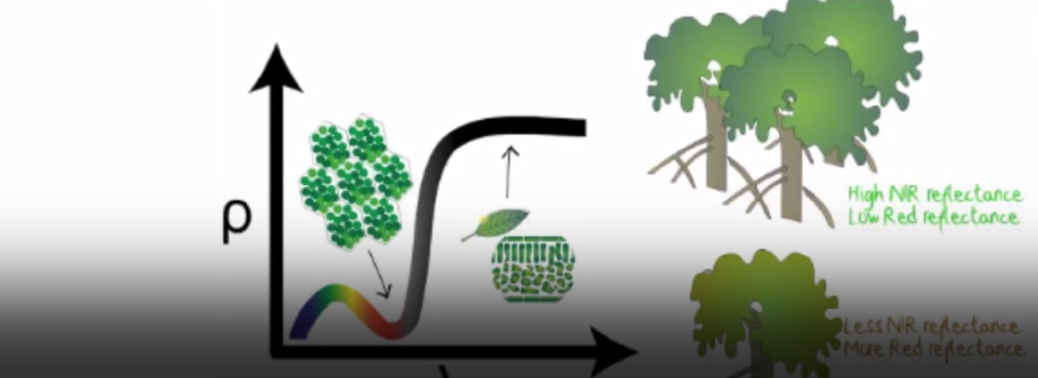NORMALIZED DIFFERENCE VEGETATION INDEX
27, Jun 2019

Prelims level : Ecology Eco System, - Bio Diversity
Mains level : Conservation, Environmental Pollution and Degradation, Environmental Impact Assessment
Why in News?
- Normalized Difference Vegetation Index (NDVI) estimates the density of vegetation and amount of food abundance available for herbivorous animals, for example, elephants.
- This index has a negative correlation with graminoids (grassy food – grasses, sedges, and rushes – preferentially consumed by elephants) in tropical forests.
Highlights:
- NDVI calculates the difference between the red and near infrared components of light reflected by objects (like satellite).
- Since healthy vegetation strongly absorbs red and reflects near-infrared light, this difference can indicate the presence of healthy vegetation and can be mapped into a colour code (green and red).
- High NDVI value (bright green) indicates healthier vegetation whereas low value (red) indicates less or no vegetation.
- Data obtained from satellites (like Sentinel-2, Landsat and SPOT) that produce red and near-infrared images are used for estimating NDVI.
Applications of the Index:
- Foresters use NDVI to quantify forest supply and leaf area index.
- Farmers use NDVI for precision farming and to measure biomass.
- NDVI is used to inform the ecology of various species, from elephants and red deer to mosquitoes and birds.
- NASA states that NDVI is a good indicator of drought when water limits vegetation growth, it has a lower relative NDVI and density of vegetation.






